projects
My work as a director and choreographer, collaborator and performer includes small and large-scale site-specific and gallery and theatre based performances working with a combination of improvisation and set materials.
I often work in intimate settings creating solo and small cast pieces, as well as projects involving mass-participation with professional and non-professional performers.
I also work as a collaborator and performer in the work of other artists and companies and initiate, collaborate and participate in a wide variety of performance research projects internationally.
And I like to make spaces for other work to happen, which is what I do through the Wainsgate Dances project at Wainsgate Chapel in Yorkshire.
SELECTED PROJECTS
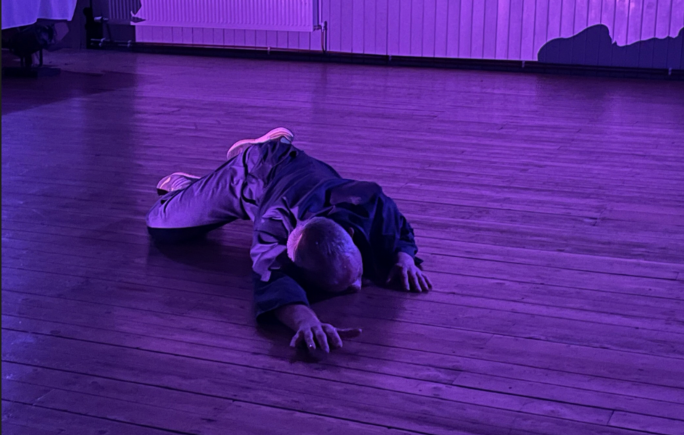
SUPERNATURE 2023
Created in response to Siobhan Davies’ film TRANSPARENT
The piece plays with physical experiences of being with, of posession and haunting in a world in which a body exists always in relation to.
The performance situation is treated as a site of supernature – a queer space of collective attention and suspension.
Supernature calls on past performance collaborations with Siobhan Davies, some of which are woven into her film.
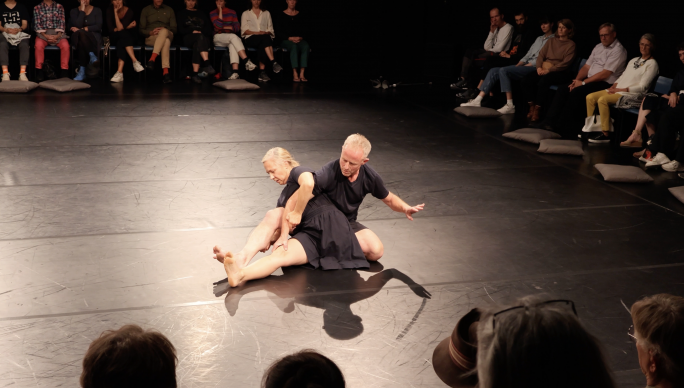
SCÁLING 2022
WITH MARKÉTA STRÁNSKÁ
Markéta and Charlie met in a dance class in April 2019 and, after an instant and intense connection in moving together, felt compelled to continue digging into the physical conversation that began in that first meeting. Then lockdown happened, and so after a long break, they came together earlier this year and began to develop a practice of moving in connection with each other.
This piece is both practice and performance. It is a little akin to climbing; a constant process of negotiation and calculation – engaging with and navigating the landscape and structure of each other through a constant and committed focus towards every shift of attention and movement.
It is a functional exploration of structures in motion and veers between a delicate precision and a visceral physicality.
Commissioned by:
Candoco Dance Company and Saddlers Wells.
Matthew Paluch wrote this about it in Gramilano:
“It’s an honest, no holds barred exploration of partnering and what it entails. The observational learnings suggest trust, awareness, guidance, responsiveness, risk, and bravery. As a duo they’re so connected, but much more than just physically. There’s a mutual sixth-sense situation. The piece builds throughout: it starts minimally, and as the connection and trust builds so does the movement, in size and scope. This isn’t a ‘pretty’ piece – we are invited to watch the actual nitty-gritty – with moments of discomfort, questioning, elements of failure and recuperation. It’s very engaging… See this necessary work if you can”
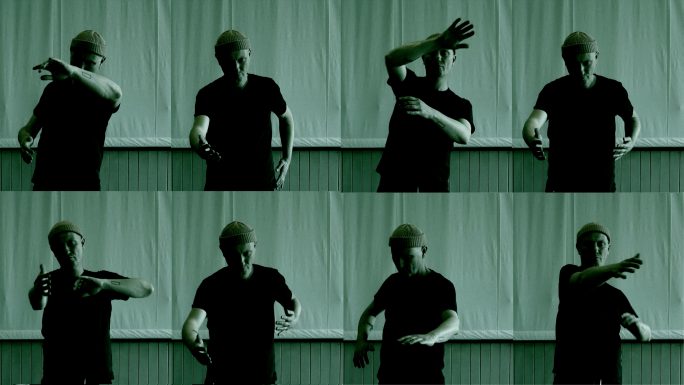
Here is everywhere
iC4c/Dance 4 Residency
2021
This research explores ways in which technology means we are everywhere and nowhere at the same time. It plays with theories of time, memory, storytelling, and how words and images change the nature of experiences of reality. This residency took place at iC4c in Nottingham, and at Wainsgate Chapel in Yorkshire where an alternative version of Nottingham was reimagined.
I worked with my partner Rob Hopper. Together we played with creating and dismantling worlds within worlds, playing with live and recorded materials.
The work also asks questions about truth and lies in a time when there is so much manipulation of reality. And it also thinks about notions of hauntology and of how we might find ourselves to be ghosts in our own lives – barely able to grasp them or to feel a real sense of material presence in the world.
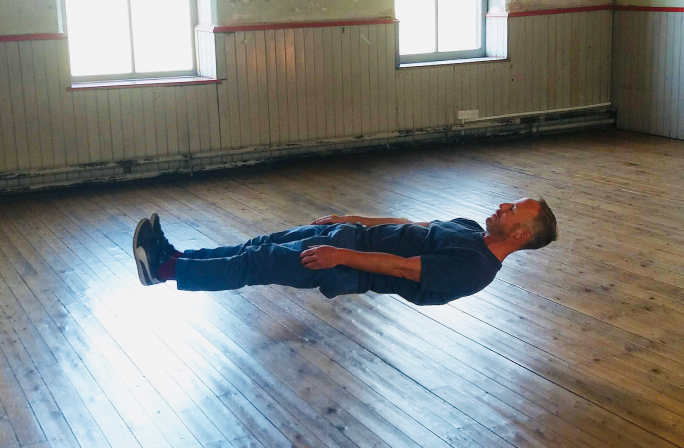
What’s Not There
2020
This solo performance plays with what we see and what we don’t see. Its words, actions and images present a story of overlapping events in spaces both real and imagined. It builds and unbuilds a world all of its own along the way by telling stories which mix with reality until it seems irrelevant which is which.
The performance brings together elements from a number of previous works I’ve made. Fragments are placed, replaced, displaced and recontexualised, bumping up against each other in a performance about perception, memory and the construction of reality.
Performances in Hebden Bridge Arts Festival on 29th June and at Tanzwerkstatt Europa in Munich 7th August and at Rise Festival in Elgin, Scotland in October 2021.
“Charlie Morrissey is alone on the stage of the Schwere Reiter. And not. There are the balls that he throws out of an orange bucket and between which he places his rowing limbs as gently as if they were living beings. And there are his claims: behind four red doors, iconic cities are seething. And Kate, Jenny or “Nina, the sprinter” would storm the stage with 18 children. While Morrissey tells us about it, he lies flat on the ground. And the audience is beginning to forge ahead with his descriptions of the imagination, and to sneak into something that dance and performance always demand. But the British dancer and choreographer wanders so casually through the space of possibilities, furnished with his memories of broken noses and missed moments, and weaving the audacity of presumption and the weight of melancholy almost imperceptibly together in “What’s Not There”. He triggers on this clever and funny evening, the memory and imagination of his spectators.”
Süddeutsche Zeitun, Munich
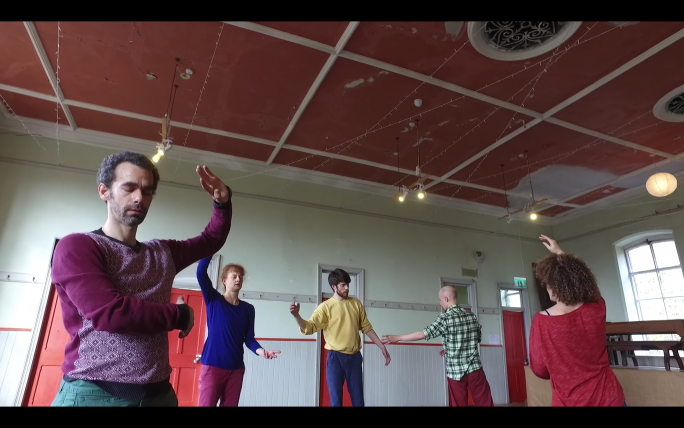
If this is it, what are we going to do with it?
2018
A performance research project with Ben Ash, Neil Callaghan, Katye Coe, Thomas Goodwin and Susanna Recchia with showings at Siobhan Davies Studios and Wainsgate Chapel.
This project played with a number of scores – propositions which asked the dancers to enter into different states of being individually and as group.
The work was influenced by Lisa Nelson’s Tuning Scores. It was about noticing how each person can affect their own experience, and how that operates within an ensemble practicing together.
It was about how composition arises as a by product of action.
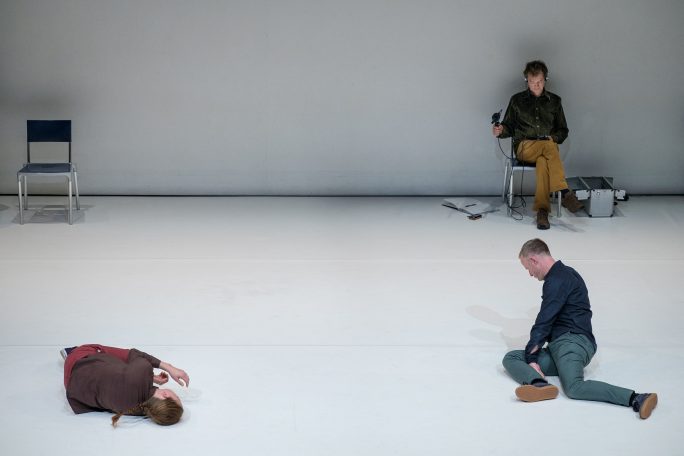
This thing that we do
2013
Katye Coe and Charlie Morrissey
This performed practice has been shown in different guises in theatres across the UK, and Europe.
A response to the performance with Katye Coe, Charlie Morrissey, Graeme Miller and Alva Noe at the Lillian Bayliss Studio, Sadlers Wells by Antonio de la Fe here
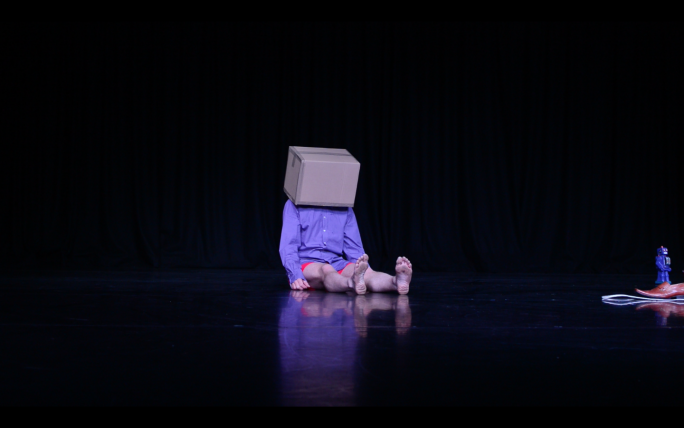
ON off
2007
Devised and performed in by Charlie Morrissey and developed in association with The Nightingale Theatre and with support from Basement Arts South East. It has been performed at venues across the UK as well as in Los Angeles, Munich, Ireland and Estonia.
ON off is composed with a simple score: when the performer says “ON”, the lights come and when he says “OFF”, the lights go off.
The piece is an exploration of the act of making and performing theatre/dance, and of what is revealed through that act – that it is in itself a very human endeavour – and that through it our humanity can be revealed.
The performance occupies a space somewhere between theatre and dance and works with set material and improvisation.
“This piece grew out of an interesting process for me. I wanted to make something on my own, with no collaborators and with no outside funding.
I had been working for a long time in groups and just wanted to see what I would do if left to my own devices, with no other collaborators telling what they thought and where the process didn’t begin either in response to a commissioner or by writing an arts council application.”
Background
I performed a very short solo as part of a mixed night of performances for Movement 12’s launch in Brighton in 2007. I worked with a simple score: when I said “on”, the lights came on, and when I said “off”, the lights went off. I played with this as a simple improvisation with set elements and it really intrigued me. There was something both direct and complex in the idea and I decided to continue with it as the basis for a more extended solo.
I performed a very short version of it a second time and Scott Smith pointed out to me that it was a Tuning Score, which had not occurred to me at all – rather dim wittted of me actually considering all the work I’d been doing with those scores. It also made total sense that I would be working in that way. The process of working with the score really became all about organising myself for saying and being “on” or “off”, and to my perception of what was happening from outside and inside.
In February of 2008, Lisa Nelson came to Brighton to and I invited her to come into the studio with me while I played with the score.
She had a video camera and everytime I called “off” she would cover the lens and then uncover it again when I said “on”.
We worked for a few days like this. It was fantastic for me – It produced such interesting and crazy results in relation to what I thought was happening – my sense of seeing and being seen, of what was revealed and hidden – all highlighted the more because the lights were not actually going off – that was just happening in my imagination.
Sometimes Lisa would make here own decisions, and reverse my calls – open the lens when I said off or just change the rhythm so that things wre more jagged. We would watch the footage afterwards. It was interesting to see me struggling to know what was happening and to see me having ideas – it was so clear to see my process – how I would think of sometthing or how something would grow in my body – how confused I would get and how dyslexic I could be about whether I was on or off.
Once I started working on it on my own again I began to get lost. Having the external aspect – the light actually going on and off or the person outside being my on and off made the whole thing abstract. I worked for a while – but it all became about ideas and that made it less interesting and engaging for me. I think I became lonely in the studio also.
One day, as I was getting ready to go to the studio, I decided to grab a box of things from around my flat – some things that I could play with in the studio – I picked up a red shirt, some formal shoes, two tin robots, a cable with a light socket on one end and a plug on the other – so that I could have a portable means of making the light turn on and off – and a cardboard box to put all these things in.
I went to the studio with my box of things and began the day by playing with the objects – moving them in imagined darkness and then stepping back and looking at them in the light. This was instantly engaging – I was no longer alone in the studio, and was being stimulated, becoming curious about the process again – seeing myself as another object at times. Working with the light bulb – switching it on and off also provided me with a means of really feeling what it was like to switch between light and dark.
I was making something and constructing meaning out of what I was making – all from this collection of ill fitting objects and from my own actions placed in the space like objects to be seen.
I invited a couple of people in to switch lights on and off for me also, which made the whole process more interesting for me – it gave me something external to respond to. An environment was created just through the presence and absence of light – and through the presence of a witness.”
Ramsay Burt writes about this work and This thing that we do with Charlie and Katye Coe on his blog
“In On Off, Charlie Morrissey celebrates his contact to the materials that surrounds him: a cardboard box and an electric bulb, which appears to be a wonderful laterna magica. At lightning speed blackouts are throwing highlights on the abruptly, seemingly improvised status quo of the performer – a funny, clever metaphor for the human existence, and for that a perfectly smart finish of the festival.”
Eva-Elisabeth Fischer, Süddeutsche Zeitung, at Tanzwerkstatt Europa in Munich 10. August 2015
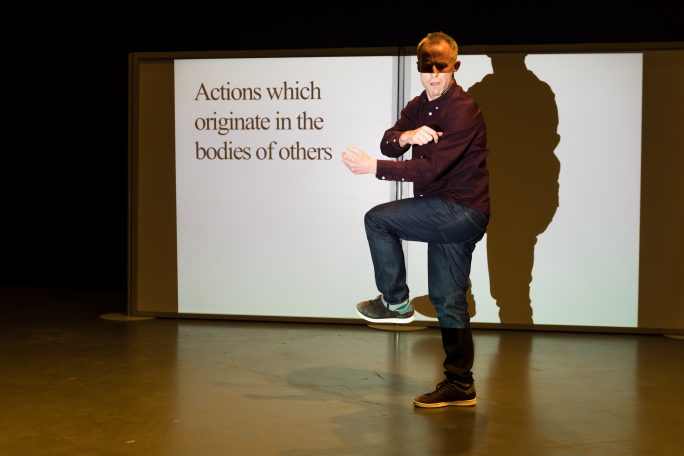
MATERIAL / REARRANGED / TO / BE
SIOBHAN DAVIES DANCE
2017
Exploring our bodies’ capacity to communicate, Siobhan Davies Dance’s most ambitious collaboration to date, material / rearranged / to / be included performance, film projection, and sculptural objects that were presented as an ever-changing arrangement. Visitors entered the gallery and were immersed in a live environment that evolved around them. Premiered at the Barbican, London in January 2017 and further performances at Tramway, Glasgow; The Whitworth Gallery, Manchester; and Bluecoat, Liverpool.
Artist Jeremy Millar provided a structure and concept for the work inspired by the practices of the art historian Aby Warburg. Warburg collected diverse images of human gestures and poses from different times and places, positioning them side by side to allow new relationships to emerge, and explore how meanings are constituted by the movement of imagery across time and space. In a similar spirit, material / rearranged / to / be presented a large-scale, modular architecture which was continually arranged and rearranged by the artists, creating new pathways through the installation and drawing visitors into a journey of discovery.
The artists and choreographers in material / rearranged / to / be combined Warburg’s ideas on bodily communication with the latest research in neuroscience to investigate how movement is felt, observed, and we reveal and conceal thought in physical behaviour.
Works included choreographies on concepts of instability and disorientation, how we archive or remember past movement, along with a taxonomy of imaginary actions. Performers engaged directly with the public inviting them to participate in the bodily postures and rhythms associated with argument, or to think about how we feel in relation to the actions of another through everyday activities like shaking hands. A looped video projection that oscillates in the space between live movement and recorded image highlights how our embodied intelligence anticipates future events. A lustrous black, mobile is suspended from the ceiling, its forms derived from Albrecht Dürer’s Melencolia I (1514), one of the most influential images in Warburg’s art historical system.
material / rearranged / to / be featured works by choreographers Andrea Buckley, Siobhan Davies, Helka Kaski, Charlie Morrissey, Efrosini Protopapa, and Matthias Sperling; visual artists Jeremy Millar, Emma Smith, and design duo Glithero (Tim Simpson and Sarah van Gameren). Contributing fellows include Professor Jonathan Cole (neurophysiologist), Professor Guy Claxton (cognitive scientist), Dr. Scott deLahunta (dance theorist), Guido Orgs (cognitive psychologist) and Professor Anil Seth (neuroscientist).
“Dancing is at its roots about showing the spectator things by focusing their gaze on the body’s ‘to-be-looked-at-ness’. What is ‘to-be-looked-at’ in Charlie’s dancing is so subtle. It’s what’s going on inside as he turns his focus into himself. Looking hard I can just catch tiny shifts in his focus and attention, tinier than one would have believed yet clearly, transparently there before my eyes. There is something deeply resonant about seeing someone moving simply and thoughtfully with such economy and making such seemingly ordinary actions look so profound.”
Ramsay Burt on Charlie’s performance in Materials Rearranged to be
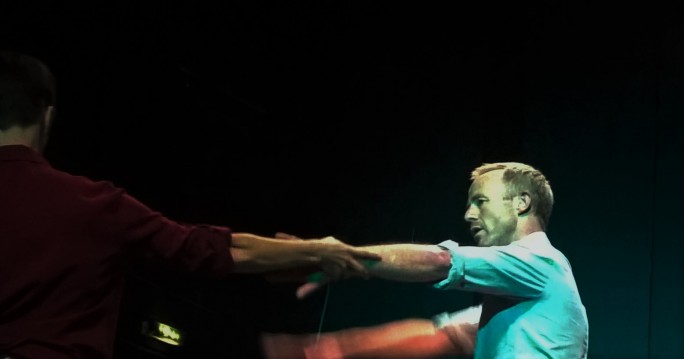
What Happens When
2016
commissioned by Joint Adventures. The work was devised and performed by Charlie Morrissey and Andrea Buckley with music composed by Orlando Gough and played by members of the Munich Philharmonic Orchestra. The music was based on a work by Prokoviev originally created for a ballet called Trapéze by the choreographer Boris Romanov.
The performance was constructed from fragments of mismatched information and the music came from extracts of an original work. The performers each attempted to find and create a work which may never have existed in the first place. The piece was assembled from existing and as yet un-made pieces, from clues collected together, sifted through and re-arranged.
The performance was a collaboration between the past and the present – it was performed at Carl-Orff Saal in Munich on November 12th 2016.
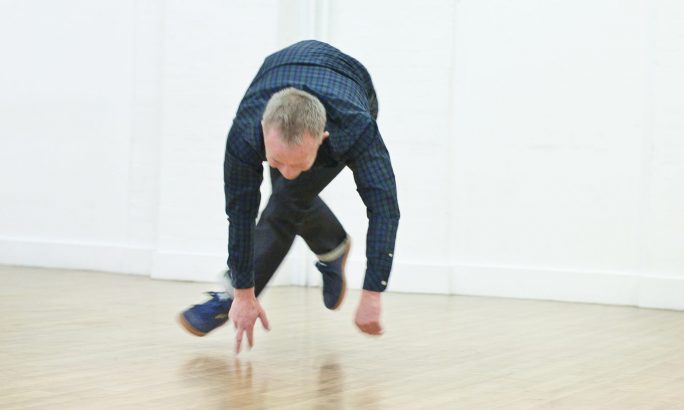
Siobhan Davies Dance: Table of Contents
2012
Using Siobhan Davies’s own history as a choreographer and dancer as a starting point, this new project reflects on the concept of archiving dance. Working closely with five collaborating dance artists Andrea Buckley, Helka Kaski, Rachel Krische, Charlie Morrissey and Matthias Sperling the artists consider their own embodied history and memory. When seen in a gallery context the work questions how different art forms build on their own history. How does a potentially ephemeral art form create a lasting presence and how is embodied movement passed on, captured or remembered? In a work that consciously breaks barriers between audience and performer Davies and her collaborators engage audiences in a kind of live encounter or exchange, a learning process between both parties. The audience intermingle with dancers and the work intentionally shows process, unravelling dance and choreographic thinking in the proximity that a gallery space allows.
Siobhan Davies rose to prominence in the 1980s and increasingly works outside traditional dance venues, promoting radical new exchanges between different art forms. This new work plays with the relationship between dance and other art forms but in the end celebrates dance as a very particular way of apprehending the world.
“By using the art gallery as a context, Davies creates an environment where these conversations about the past will continue their arc into the future, like new stars on a journey. If anyone can boldly go where no choreographer has gone before, it is she.”
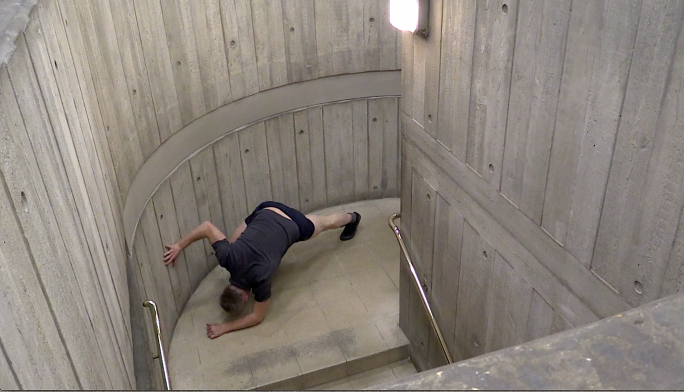
I am a Robot
2014
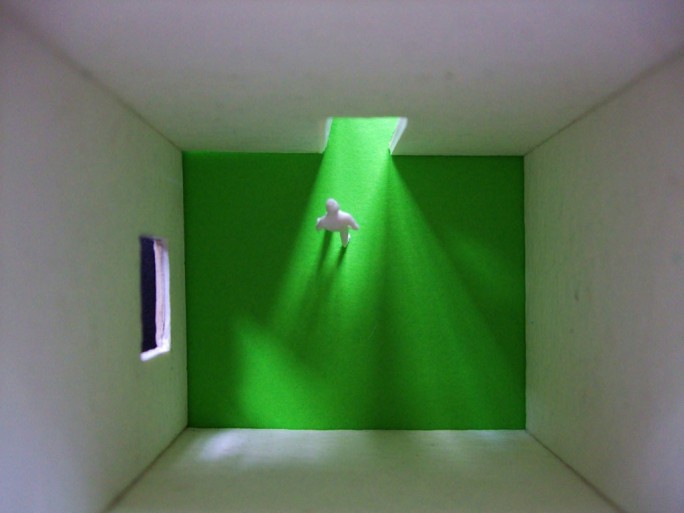
PLANS OF THE TENTH FLOOR
A collaboration between Charlie Morrissey and Marisa Zanotti.
2013
A research into a choreographic live and moving image installation.
Plans of the Tenth Floor explored a series of questions about the nature of the experience of reality in relation to the particular kinds of bodies we have. The work uses live performance and moving image to play with what is experienced as real; what is not, and how one questions the other in the areas between the two.
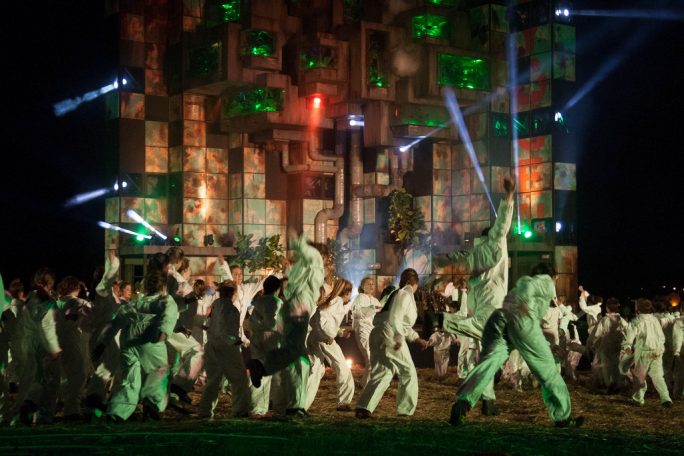
The Tree of Light
2012
CULTURAL OLYMPIAD
A major new site-specific project with a series of large scale performances taking place in the South East of England during June and July 2012.
The Tree of Light was one of four large-scale community celebrations in the UK funded by Legacy Trust UK, an independent charity set up to create a cultural and sporting legacy from the London 2012 Olympic and Paralympic Games across the UK. South East England’s natural environment will be celebrated as community members make an unforgettable contribution to the London 2012 Cultural Olympiad. Participants from schools and community groups along the River Thames will take part in performances in Oxford, Henley, Reading and Windsor/Slough around a central Tree of Light – a monumental, sculptured work of art – in visually stunning spectacle events featuring music, choreography and cutting edge digital arts in spectacular settings.
The project was realised by installation design team Block9, artistic director Charlie Morrissey and composer Orlando Gough, working with a team of choreographers including: Sophie Arstall, Caroline Bridges, Debbie Camp, Leila Chebbi, Morgan Cloud, Paula Conduit, John Darvell, Aya Kobayashi, Fiona Millward and Rachel Palmer working with groups of all ages to create the performance. The sound of the tree is being specially created by Matthew Herbert and James Matther.
The massive Tree of Light that Block9 produced used LED lighting and was partially powered by Electric Pedals’ adapted bicycles and rowing apparatus.
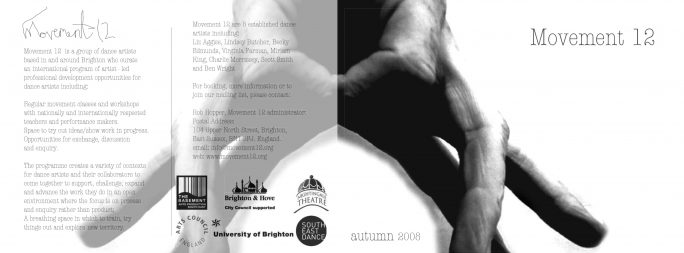
Movement 12
2008-2012
Movement 12 was a group of dance artists who curated a 3 year international programme of workshops, classes, screenings, performances, laboratories, discussions, talks and other events that were designed to interrogate, develop, explore and expand the field of movement and performance.
Events took places in venues all over Brighton including The Nightingale Theatre, University of Brighton, The Basement, The Dome Studio Theatre, and many other spaces including artists homes.
The group was made up of artists including: Liz Aggis, CiCi Blumstein, Lindsey Butcher, Becky Edmunds, Virginia Farman, Miriam King, Charlie Morrissey, Scott Smith, Ben Wright and Marisa Zanotti.
Movement 12 gave me a basis for founding Wainsgate Dances at Wainsgate Chapel.
Movement 12 curated events with artists including:
Steve Paxton, Jonathan Burrows, Kirstie Simson, Wendy Houstoun, Babette Mangolt, Charles Linehan, Rahel Vonmoos, Ben Wright, Probe Project, Ben Ash, Gill Clarke, Siobhan Davies, Rose English, Henry Montes, John Stirk, Christian Burns, Sasha Rubicek, Fin Walker, Matthias Sperling; Rachel Krische; Detta Howe; Theo Clinkard; Catherine Bennet; Lauren Potter; Antonia Grove; Lisa Nelson; Simon Ellis; Jeremy Nelson; Delphine Gaborit; Gaby Agis; Andrea Buckley; Henrietta Hale; Atsushi Takenouchi; Hiroko Komiya; Claude Coldy; Augusto Corrieri; Becky Edmunds; Lila Dance and others.
Movement 12 published transcripts of events including an evening with Steve Paxton, in Dance Theatre Journal.
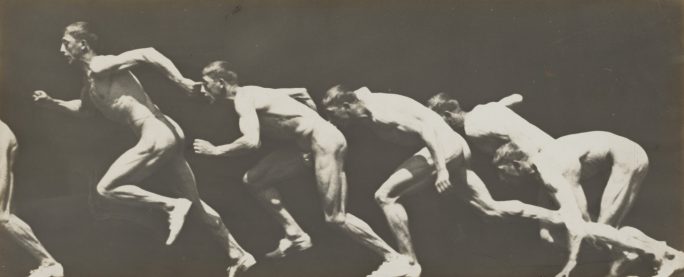
What Happens When
2012
Charlie created a new solo commissioned by Siobhan Davies and Bob Lokyer as part of an evening of work at the Place – all proceeds went to the RPS Drummond Fund and The Place’s Pioneering Fund.
Siobhan Davies gave the images of Etienne-Jules Maray, whose work represents some of the earliest attempts to record movement photographically, as a starting point for this solo performance.
Charlie selected moments from the original chrono-photographic film sequences and then reordered and reanimated them.
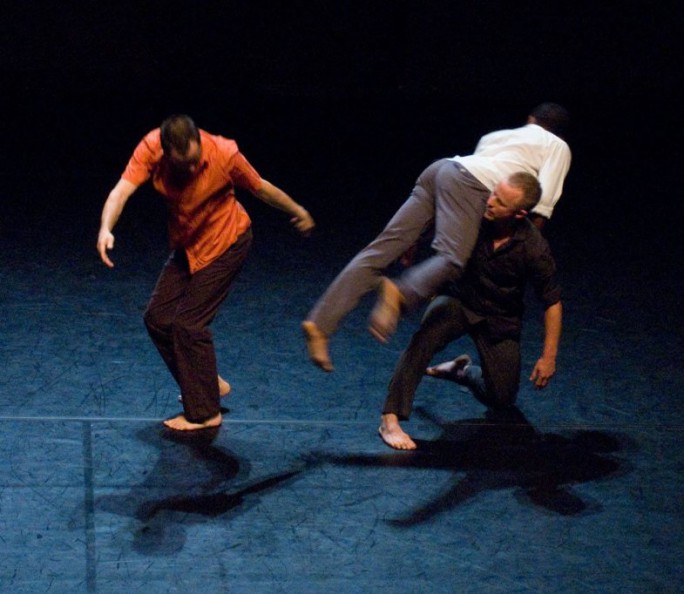
Moving Men
2007-2010
Moving Men is a trio including Jean-Hugues Miredin, Charlie Morrissey and Adrian Russi.
They have been coming together since 2007 to research, teach and perform dance and improvisation.
They work from a mutual interest in improvisation and their research is very much a physical exploration of three people moving and composing together in space.
They have performed together in Freiburg, Rome, Bern, Warwick, Brighton, Rotterdam and Moscow.
Although they come from different movement backgrounds, all share an interest in Contact Improvisation. Their movement exploration deals very much with developing new vocabularies using Contact Improvisation as a reference and starting point. The language they are exploring is very much about expanding the physical potential of the trio form – the practical and technical aspects as well as understanding more about the less palpable aspects of communication between three people as they move together in real time.
Integral to this is their teaching practice together, which enables them to clarify and define more clearly aspects of their movement practice through passing it on to others and seeing how it develops through that dissemination. That information is then fed back into their practice so that the movement is constantly deepening pushing at its own boundaries.
The trio are also in a constant process of exploring the relationship between them as dancers, attempting to understand more and more about how they are composing in what can be the rather indefinable process of improvisation. They are exploring an extremely complex and sophisticated communication system – something in which the body and all it’s means of perception, and the mind and all of it’s intelligence are involved. A process of deciphering signals and turning bringing perception, thought and action together in the moment.
Watch excerpts from a performance at Dampfzentralle in Berne, here
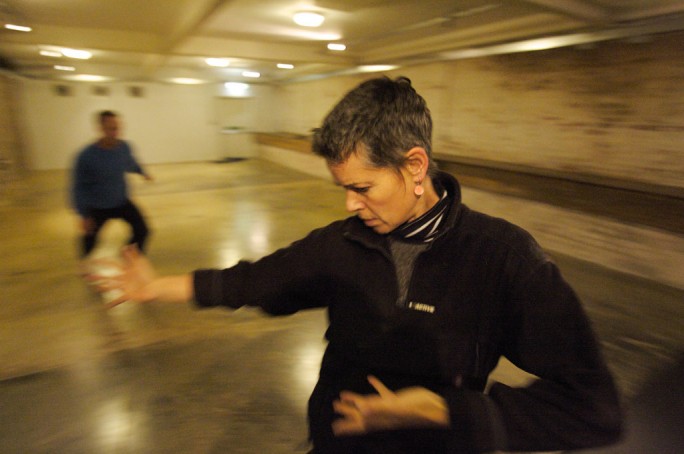
Lisa Nelson’s Tuning Scores
1992 – ONGOING
Charlie’s first experience of this work was in 1992 in Vermont in the studio of Steve Paxton and Lisa Nelson.
The people practicing it were Lisa Nelson, K.J.Holmes, Scott Smith and Karen Nelson – together they had a group called Image Lab.
Since that time he has been involved in many working groups, “observatories” and showings of work based on the Tuning Scores.
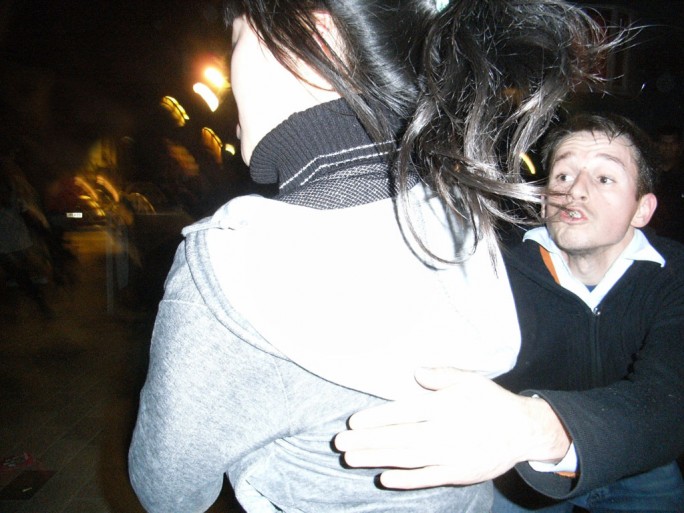
Duets for the Small Hours
2009
Commissioned by Brighton and Hove arts Commission as part of White Night – a series of arts events taking place through the night on Saturday 25th October in Brighton. This piece starts in three locations in central Brighton at 2am.
Devised under the direction of Charlie Morrissey with performers Guy Adams, Jason Keenan-Smith, Carrie Whitaker, Abi Mortimer, Cai Tomos and Annie Lok with sound by Scott Smith.
Three duets performed by 6 dancers through the streets of central Brighton in the middle of the night.
Two men
A woman and a man
Two women
The performance plays on the ambiguity of people’s exchanges glimpsed in passing late at night. Based on situations in which I’ve been wandering home at night, or looking out of my window and have seen people fighting, or arguing with someone, or drunkenly falling around the streets with their mates.
The questions that arise as we witness these events;
Are they lovers, enemies or friends? Are they fighting or playing? Are they drunk or are they hurt? Should I intervene or leave them to it?
So often our perspective of something we see is altered as events unfold to reveal that something very different is taking place.
This is an intriguing aspect of life in Brighton and of many towns in the small hours of the night, when people are returning home, or back to a party, or between one party and another, and these exchanges can sometimes reveal moving glimpses into the complexities of people’s relationships played out in the streets when people are tired or drunk and their guards are down.
These duets were performed through the streets in the town centre with the projections sited on buildings nearby. The projections represent a sort of imprint of all the exchanges of different couples through the years, played out in the streets, in alleyways and doorways – the ghosts of past and future relationships.
Background
The duets were created by the performers working with a set of physical instructions which had to be strictly adhered to. The content of the duet was generated by the physical activity and how it affected the performers as they carried it out through the streets over the hour duration of the piece. The tasks required all the performers attention and so they were completely focussed on it and their partner.
The first instruction was that one person would remain passive with their eyes closed while their partner attempted to move them. The passive person retained enough tone in their body so that they didn’t simply collapse all the time, and the active partner tried to move them through space.
At a certain point the roles changed with an extended transition from being active to passive and vice versa. The transitions between each task became materials in themselves – a struggle between one place and another.
The second instruction involved each performer trying to push or pull the other while each resisting the other at the same time. This gradually arose out of the first instruction creating a physical dynamic of it’s own.
The next instruction was to dive or jump at your partner and the final one was about trying to push your partner in front of you.
The whole series of insructions would last about 20 minutes and then go back to the beginning – being performed on a loop which transformed as time passed through the sense of the performers tiredness, immersion and commitment.
Here’s what one of the performers, Abi Mortimer, had to say about performing the piece:
“What I found most inteesting about the performance of it is how the simple tasks transform into somehting so meaningful in the context – the streets.
Because the structure was so clear I found that I could not help but to really be moved by the quality and feeling by which I was able to perform these instructions. (when being watched and in the fresh air).
It was emotional.
Unquestionably emotional.
I did not think about the task and I did not call to mind any past rehearsal- I found the situation far too absorbing for “anecdotal” thought.
I wonder now if the hour further encouraged this state of mind.
The tiredness was a funny thing- I did not recognise it during the rehearsal but I know I was feeling it directly before and shortly after the performance so I think it was probably always there, and again that puts you in a different state of mind.
And it was trance- like.
I was totally absorbed and engaged in the performance- to the point where I could not even give you a ball park figure of how many people were following Carrie and I. I knew they were there- I felt a presence and I knew I was being watched but details? Nothing!
I remember quickly reaching a state where …. how do I put this…. where, yes this was a performance, but more so- a happening between Carrie and I (and quite a private thing) which only because I was so “in It” was it ok to be watched. And that is what it was for me…. we were being watched- but the audience was in no way part of my happening- when I look back I dont remember them.
All this is true until a drunk pulls you out of it with a “check this out, this should be a fucking laugh”…. and suddenly… so suddenly I was immediately self conscious.
– But isn’t this true of real life? When you see an argument at 2.00am they dont notice you are watching and they dont care- they care only if you involve yourself.
It was also a funny thing just to be on the floor on the streets. It was imaginitive. Such a different thing to a studio floor. The pavement was cold, bit damp, grainy- and my contact with it was therefore Lasting… and this made it feel all the more real. Real dirt, real grazes, real wet- made it feel filmic!!! the experience was on your skin and was therefore believable, convincing.
This also transformed the tasks and the relationship.
It was exhilarating- when I finished I felt almost like I had survived something!”
When I watched the piece being performed through the streets, I found it really compelling. These people completely engaged in each other – clearly involved in some sort of physical conversation that resembled completely those people late at nigh – maybe drunk, maybe fighting, maybe friends, maybe lovers, and so on. The duets were followed by crowds of people and came into contact with people drunkenly wading into the situation trying to stop the fight or making comments. At one point, the Police showed up having been called by a resident to stop the fight. The combination of the performers, audience and passing public created such a fascinating spectacle. It was great following the performers who were so intensely involved in each other – it made me want really want to look at them, to wonder what they were doing because it was clear that were doing something which was generating its own momentum.
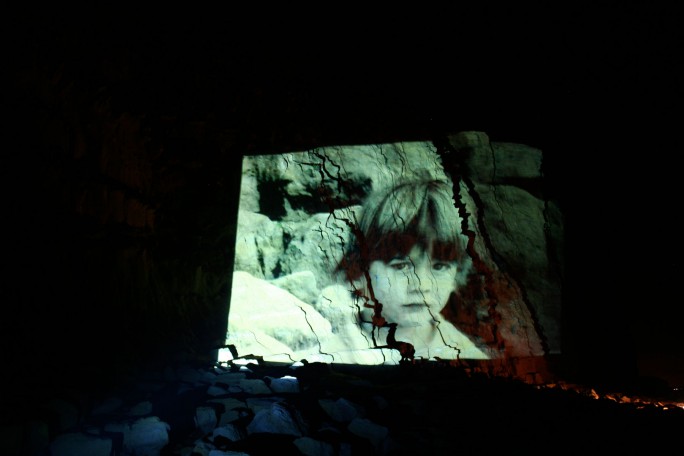
Deep Time
2008
A series of three site-specific performances commissioned by PVA Medialab and the Jurassic Coast World Heritage Site.
The performances took between September 2008 and September 2009 at sites along the Jurassic Coast.
The title Deep Time comes from a term used to describe geologic time and the evolutionary changes that are documented in layers of rock and deposited over 4.6 billion years.
The three events formed a trilogy exploring different aspects of human connections to the process of evolution, drawing attention to the land as a record of everything that has passed, and to human relationships to the landscape now.
The project explored metaphors between the layers of time, the shifting of land-masses and of our fleeting live and shifting presence on the earth.
Part One
Origin of the Species.
West Bay Cliffs after dark
Working with the West Bay Cliffs as backdrop, stage and cinema screen, this site-specific film draws peoples attention to the significance of the site as an ancestor. It points out that this place on which we walk is made of everything that has gone before us and is an ever-changing record of the process of evolution.
The film was created with people passing by on the beach by the cliffs and their faces projected huge onto the cliff face.
Part Two
Here Now
Budleigh Salterton At sunset
These pieces offer a different lens through which to view the landscape. They also offer a context for reflection – a moment in which to consider our relationship to places which so define our history and whose future is so entwined with our own.
What does this place mean to us? What is universal value in relation to sites such as these? What might drive us to want to protect this?
This piece is a development of the first one which was meditation on the fact of our connection to, and origins within the landscape. The second piece develops some of the same elements and ideas, and introduces a live performance element to the piece.
The live element of the piece serves to engage people in the human scale of things – in the here and now aspect of being in the landscape.
The live performance consisted of a simple set of movements learned by people onsite on the day. The contrast between the hugeness of the landscape and of the images projected onto it will serve to remind of a sense of scale – the hugeness of time versus the smallness of us.
It’s about scale – the vastness of the landscape with the smallness of the human presence – a metaphor for the vastness of geologic time set against the very short time that humans have been present on the planet.
Part Three
Without Us
Lulworth Cove. Nightime.
The title comes from the book written by American journalist Alan Weisman: The World Without Us, about what would happen to the natural and built environment if humans suddenly disappeared.
Sundown at East Cliff, West Bay. September 28 2008.
Charlie Morrissey’s stunning new work for the Universal Value commission was revealed to an audience entranced by the monumentality of the landscape and lulled to silence by the sound of the sea. Audience responses to Origin of The Species included –
‘A serene and contemplative work set against the magnificent backdrop of East Cliff. As the projected faces passed by, acutely detailed and sensitively observed, one was filled with a feeling of time and generation, and even of timelessness itself. Inter-cut with images of the foreshore and sea, often, and quite disruptively, delivered in reverse motion, the entire drama played out with great poignancy. However, other factors were at play. The surface of East Cliff, grand, vertical and deeply fissured, imbued a sense of optical dissonance, disturbing the otherwise poetic progression of images. Faces were scared and distorted; young skin rendered arid with smiles and features cracked by the eroded surface. East Cliff fused as one with the images and transformed them all with a dark and gently sinister undertow of impermanence. Every thing changes – everything ages, even the eternal cliff face. Initially gentle imagery was transformed with a gravitas that reflects the observational skills and sensitivity of the work’s creator.’
‘Amazing, a very touching display of innocence and humanism.’
‘Simple, elegiac, beautiful. A melancholic summer’s last kiss. Intimacy on a grand scale.’
‘The West Bay event on Sunday night was truly wonderful. As a Jurassic Coast event it was fantastic – the subject matter of local people, it was about and completely harmonious with the coastal site but also monumental and wonderful in its scale. The simplicity of the projection accompanied by the sound of the sea, the lanterns on the beach and the flaming torches along under the cliff made the event really magical and as someone local to that particular bit of the coast I felt overwhelmingly privileged to live somewhere so beautiful. Walking away from the site and watching the second ‘viewing’ from the East pier was for me the real revelation with the image distorted to the full height of the cliff and reflected in the sea – I’d love to know if there were any fishermen watching from the sea! I felt that I really was experiencing the place in a completely new way – so the pre-requisites of site specific work were genuinely met for me.’ ‘Beautiful, sensitive, moving and evocative. I can’t wait to see the next two parts of the trilogy.’
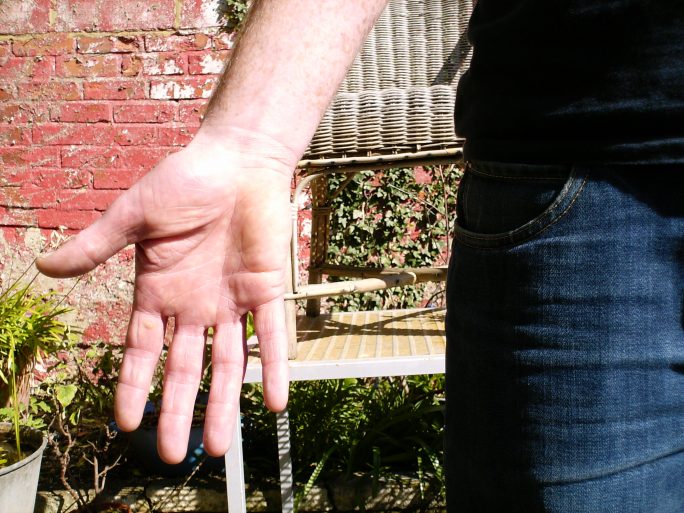
Every Contact Leaves a Trace
2008
(I wrote this at Fabrica in Brighton, in response to the exhibition INDELIBLE, for which I was artist/animateur in residence)
“a the body is an instrument of perception. It’s also an expressive container of its accumulating physical and emotional experience.
Bodies are living and constantly updated archives of everything that has happened to them – vast stores of information expressed and contained in muscles and bones, scar tissue and habit.
Like trees on an exposed hillside – bodies are shaped by the weather of their lives– each body an individual response to the ground on which it stands, and the direction, force and frequency of the gales, the sun and the rain they encounter and endure. Sorry to be so corny.
Each next moment in the life of each body is informed by the last and by the years of physical and emotional moments that preceded. Each body is evidence of its own history in action.
And bodies and minds are in a constant process of exchange; with other people, the environment, the society – in a dialogue between mind/emotion and anatomy.
Thinking and feeling are embodied in each person’s physical make up, and the physical body also impacts the emotions.
The two are inextricably linked – people are like reactors – constantly firing between thought, feeling and action – one initiating and imprinting itself on the other.
I’m interested is how information is perceived by a body – the physical process of knowing and feeling. People seem to know that they are through a number of different senses – I know that I am in a body or am a body, I know that I am in space, I see the things that define that space, I hear the noises that are created by and in it, I have sensations of cold and warm, I can feel that there is activity inside this body. I know that this is me and that is you, I remember a past and imagine a future – all through a combination of physical, cerebral and emotional processes.
It is the instrument that perceives these things that interests me – what lets me (think I) know what I (think I) know.
I’m interested in exploring how I bring my attention to the act of perception, and how to invite other people to attend to their own perceiving as a means of entering a dialogue about it.
I am a living organism in a process of perceiving and processing perception, through the filters of my taste and my imagination and the peculiarities of my own senses my actions are both informed by and informing my perception.
This is a just a means to see things through a lens of physicality and noticing some of the physical things and actions that happen, rather than through a lens of psychology, or sociology or anthropology.
It’s not my intention to ignore those things but to explore other perspectives – especially in in being alongside this exhibition whose subject matter is so much about the devastating and monumental marks left upon people who have been in contact with such horrific events.
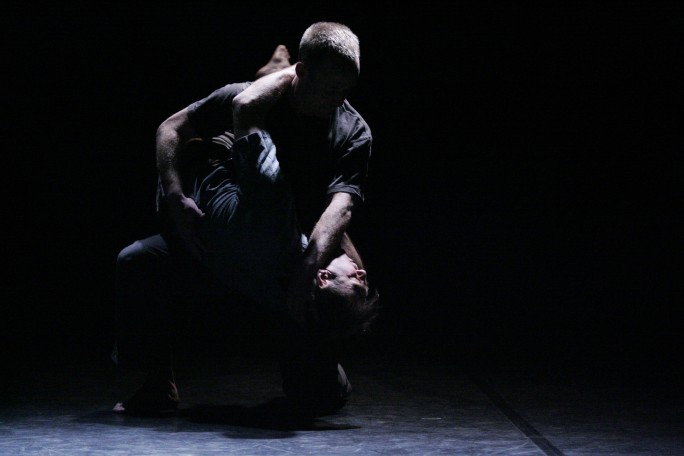
Instructions for Survival
2006
A performance created with Scott Smith, Philip Jeck and Michael Mannion – performed at the Corn Exchange Brighton and the Clore Studio at the Royal Opera House, London
This piece grew out of an ongoing dialogue of movement between Scott Smith and myself which began when in Vermont working with Steve Paxton in 1992.
Scott and I continued to meet when he moved to the UK, and there was something very particular in the dancing we did together which was very much informed by contact improvisation and by Paxton’e Material for the Spine.
Steve Paxton came and worked with us during our process, which refocussed or our exploration into particular anatomical specificities.
The dancing we did was very visceral – we would put our hands in each others faces and almost climb into each other – there was a lot of permission. Our process involved a lot of talking then doing then talking again – talking g about life – surviving our own fragile ego’s – getting on – noticing what was happening as we moved and these conversations in moving and talking became intertwined.
Scott came up with the title – it seemed right.
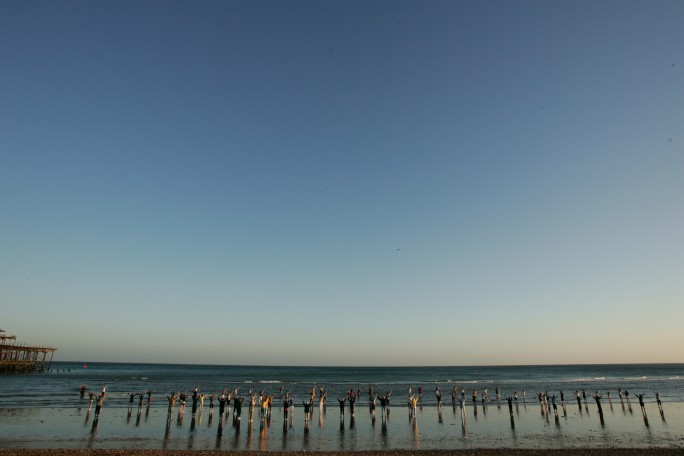
Where The land Meets The Sea
2005
Working with choreographers Guy Adams, Anna Carlisle, Ruth Pethybridge, Anne Colvin and Dan Watson who each worked with a group of dancers to choreograph a part of the work.
Thor McIntyre-Burnie created a soundscape for the piece.
This performance with 100 performers, was set on the beach and in the sea at low tide on Brighton seafront, and was a celebration of life on the shoreline.
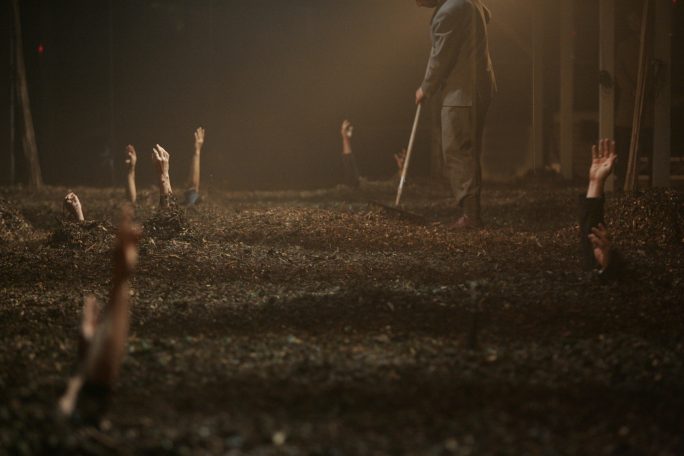
The Palm House
2006
Small Wonder was the name of the company I set up with Paul Harrington to make site-specific work through.
The Palm House was devised and conceived by me, Paul Harrington and Graeme Gilmour in collaboration with The World Famous Fireworkers, Thor MacIntyre-Burnie and Phil Supple.
It was devised with the performers: Lindsey Butcher, Annie Lok and Jenney Tatersall.
The piece was created and set in a huge disused glass house and was an exploration of people’s relationship to nature – both human nature and nature as a whole. The piece was looking at how our treatment of our environment is a reflection of our treatment of ourselves.
The intention was to create an experience in which we brought the outside inside – one where the audience would be able to feel the stuff of the performance – to feel the humidity, to smell the earth and so on.
The glasshouse was filled with a deep covering of bark chippings, and fitted with various agricultural misting, and watering devices to produce fog and rain. Various pyrotechnic devices were used, flames that rose up out of the ground like vines, at one point the whole of the building was surrounded by flames shooting up from gas jets, and lights from the exterior brought the sun up.
“this is the mesmeric power of Small Wonder’s site specific show, which creates a world where rain falls indoors, white fire snows down outside and humans grow from the earth like saplings… powerful images which burn into the retina… a fantastic melding of light, music, pyrotechnics and human flexibility”
The Argus
“a brilliant opening to Small Wonder’s (The company Morrissey founded and directed with Paul Harrington)) site-specific performance in which the battle between man and nature, and man and his own nature, is played out with some help from pyrotechnic experts the World Famous, who make it snow fire and shudder stars. The wild and the tame, the civilised and the untrammelled do war as the elements rage. Adam and Eve taste the apple and the Garden of Eden is casually despoiled. Towards the end it feels as if the whole world is ablaze. This is, as promised, a remarkable “adventure for the senses”
The Guardian
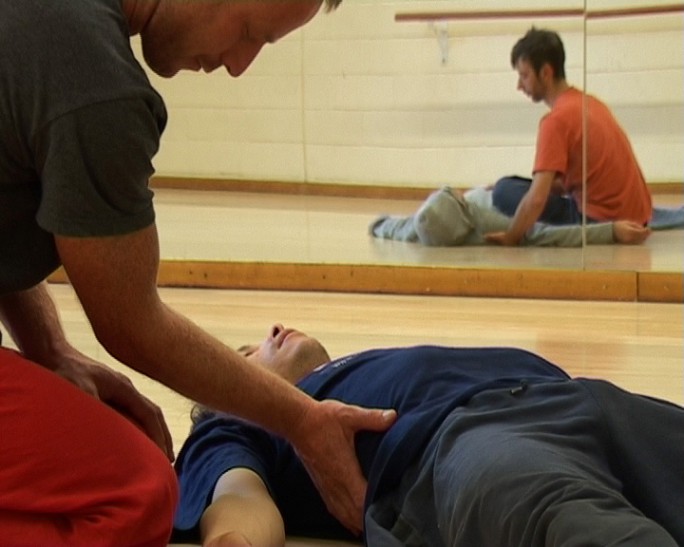
Body of Truth
This project was set up with Charlie Morrissey K.J.Holmes, Scott Smith, Christoph Lechner, Henry Montes and Kate Brown.
We set out do see what would happen if we just went into a studio with no instructions or structure and just worked together – we’ve managed to come together on a few occassions for intensive periods of one or two weeks in London and in Brighton.
The first time we met, someone would lead a warm – up in the morning which would lead into open improvising. At lunch we would eat and talk about what had happened, or things we were interested in and then in the afternoon, we would go back into the studio and just allow whatever happened to happen.
We met over a 3 year period exploring a collective interest in improvisation, and relying on a collective experience. The individuals involved had a huge amount of experience between them, and this resarch project was a consistently rich mine of performative information.
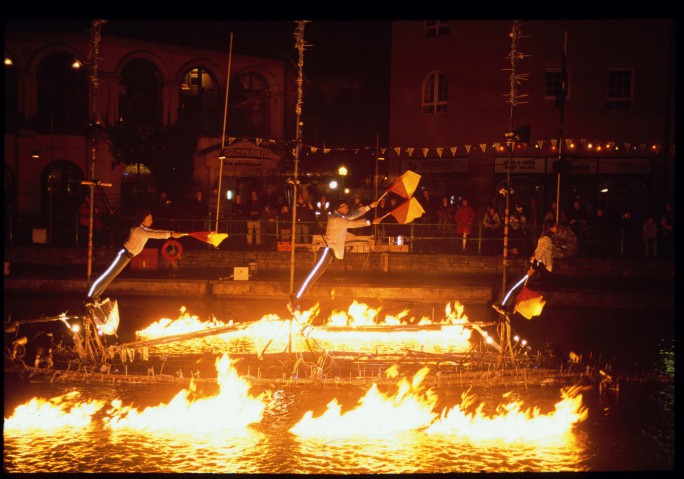
Divers
2005
Created in collaboration with Charlie Morrissey, Paul Harrington, Graeme Gilmour, Thor MacIntyre-Burnie, Mike Roberts and the World Famous Fireworkers and John Varah for Same Sky.
A participatory performance which took place on, in and under the water at Brighton Marina. See a video here
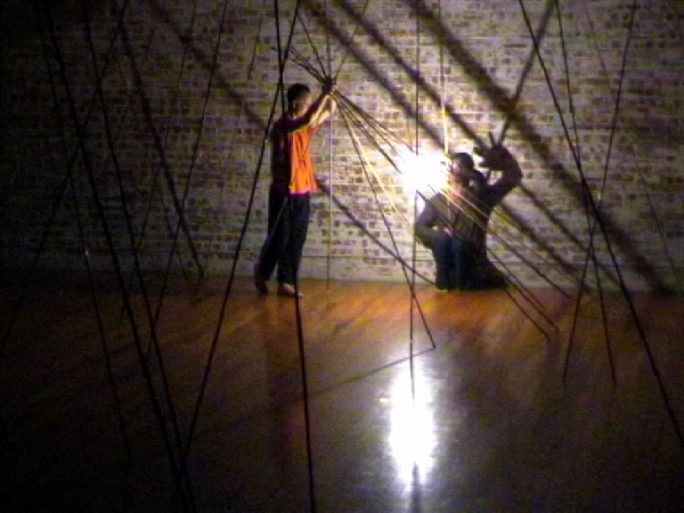
Direct Interactions with Moving Spaces
2003?
This project took part in two stages: There was an initial research project that took place at Chisenhale Dance Space with dancers: Charlie Morrissey, Scott Smith, Lindsey Butcher and Fin Walker and interior architect Rob Hopper. Arnolfini then commissioned a performance with Charlie Morrissey, Scott Smith and Rob Hopper.
This piece partly grew from Charlie’s work with Sean Curley on Because You Have To. Again it explored creating a space that might feature as much as the movement that took place within it – that might even define aspects of the movement that could take place within it.
Rob Hopper created an interactive installation of bamboo canes of differing sizes suspended from the ceiling with light bulbs suspended in amongst them. They created a landscape that the performers navigated.
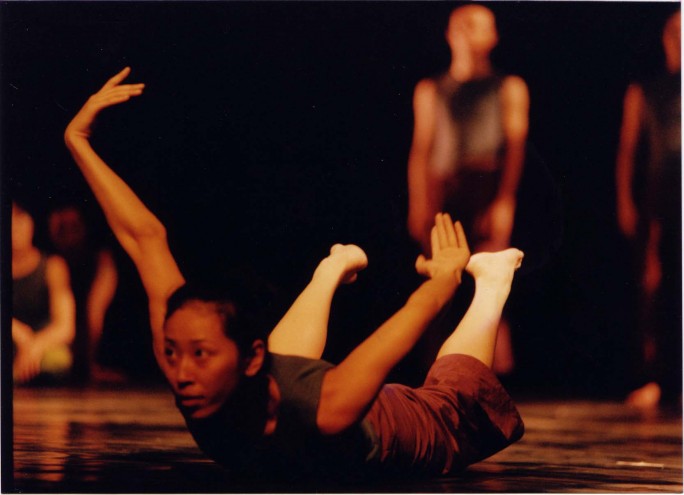
A Tacit Assembly
2001
This piece was co-directed and choreographed for the Guangdong Modern Dance Company by Charlie Morrissey and Becky Edmunds with sound created by Ansuman Biswas, and lighting by John Varah.
The piece was created in Guangdong in China and performed in China and across the UK.
“a joy to watch – both in terms of conception and execution… every move was a celebration of physicality and rigour”
The Scotsman
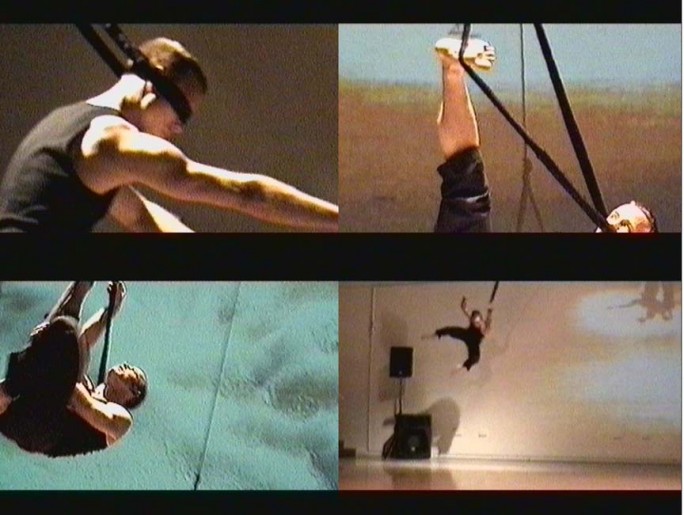
Line
2001
Line was co-commissioned by Dance 4 and Arnolfini.
The piece was an exploration of the past in the present – of how our lives are intertwined with the lives of others via our histories. The piece was performed in Brighton, Nottingham, Bristol and London.
The first seed of this piece came into my head while I was working on another show – Absolute Zero, which was a bit of a monster of a show for me – a huge and unwieldy production. My Grandmother died while I was making that piece in which we worked with ropes that had slings on the end of them. When my Grandmother died, there was an image came to me of looking behind myself and seeing footsteps in the sand – those furthest being my Grandmothers, and then my mothers and then my own. With my Grandmother dying, her footsteps would disappear, as at some point would my mothers and then I’d be left with only my own and then at some point my own child might be watching my footsteps fade. I was interested in the idea that the further back you go, the fewer people there are – that one great great great grandparent is responsible for many now and that as the years go on the spread becomes wider and wider. I liked this connection between the rope I was hanging off in absolute Zero and this fact. That the rope had it’s source in one point and yet the longer it was, the further i could move, though always in some way bound by the fact of that connection. It felt like a perfect and simple metaphor that could exist for itself, while I could get on with the physical business of working with the movement potentials of being attached to that rope – that it offered freedom and restriction in equal measure, in much the same way that our own relationships to our personal histories can.
Why work like this? My thoughts were – they are changing all the time – that I wanted to make work which addresssed my experience of life, and that my experience is carried as much in my body, as it is in my mind; that as much might be revealed through an examination and exploration of my physical interactions with the physical world, as it might through my intellectual and emotional approach to relationships asn so on. (of course, these things are intertwined, but I’m not going to get into that now). So I could know that my attachment to the rope was both a metaphor for my attachment to my own history, and a physical exploration of the physics of mving while attached to a rope.
There is something so clear about being able to explore the movement possibilities of working with the rope with no intention of trying to make it mean anything, but simply allowing the movement to exist within this frame which talked about our histories – how they liberate and bind us. I wanted to leave room for grey areas. The other elements – the sound and video created layers which fed into a sort of landscape which conjured ideas of memory, of what we remember and forget. The sound included extracts of interviews I carried out with people of all ages – people talking about their childhoods, their first memories, their dreams, the part that their past plays in their present. The video played more with projecting the live action – sometimes just after it had happened, or pre – recorded footage from the rehearsal process as well as images of flocking birds and water as symbols of memory.
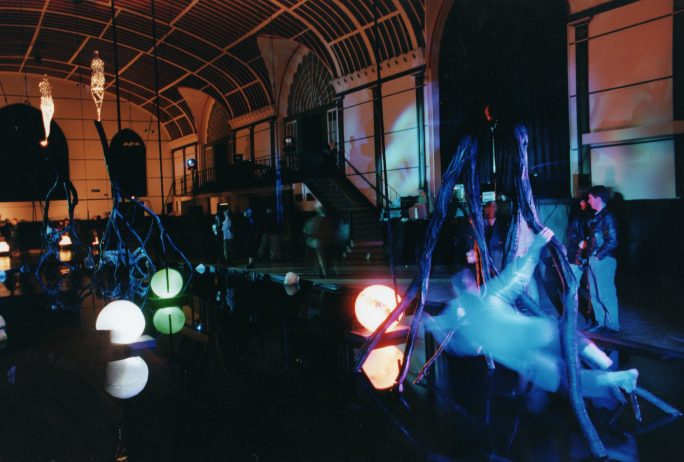
Absolute zero
1999
Commissioned by Brighton Festival in 1999. Performance created in collaboration with Walter Bailey with composer Kaffe Matthews and performers Scott Smith and Lindsey Butcher.
The piece took place around a, 50 metre oval black pool, with ice sculptures suspended above it and floating in it. The performers moved on and off ropes, climbing in and out of charred tree sculptures, and splashing in and out of the water, and in to and out of the audience that surrounded them in the Corn Exchange in Brighton.
“hypnotic…gleeful…sublime…some truly electric moments and life throws up precious few – grab them while you can.”
The Guardian
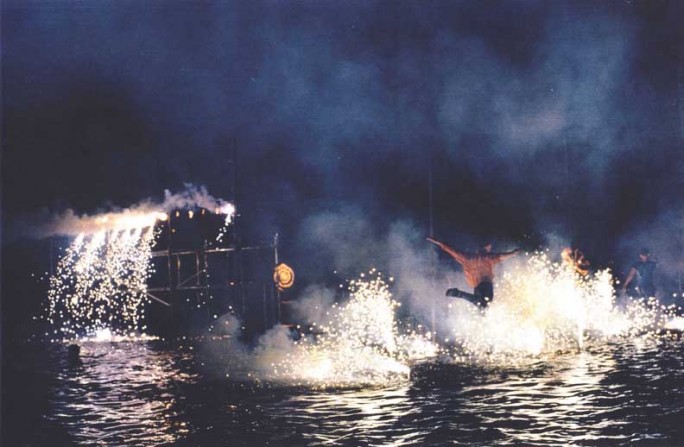
Flood
1997
Flood was co devised, choreographed and directed by Charlie Morrissey and Becky Edmunds for Same Sky in collaboration with artists Paul Harrington, Laurence Potter and Sarah Hardy, Lighting designer John Varah and pyrotechician Mike Roberts of The World Famous.
It was performed in and on Hove Lagoon in East Sussex. 40 people performed in the water, on floating platforms and on platforms that were concealed beneath the surface of the water. The piece saw the coming of a great flood and the ensuing chaos and it’s transcendent victims.
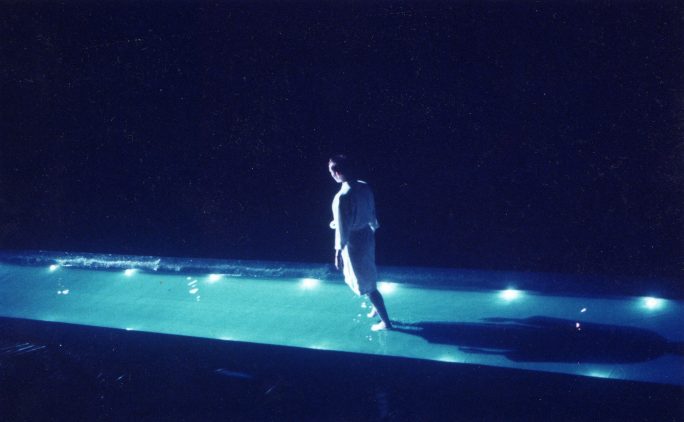
The Smallest Room
1998
Commissioned by Brighton Festival and performed in the Corn Exchange.
The piece took it’s audience on a journey through the sewers, out into an enormous re-imagined bathroom with an 80 foot channel of water cutting the space in half, the source of which came from a giant shower and waterfall.
Directed and devised by Becky Edmunds and Charlie Morrissey in collaboration with artists/set builders Paul Harrington, Laurence Potter, Sarah Hardy; lighting designer/maker John Varah, and Sound Artist Alex Bradley; and a cast of 30 dancers.
“It was genuinely joyful…gloriously imperfect… I was bowled over”
The Guardian
“…brave and articulate… It was gripping… fast and funny… spectacular… a curiously cleansing experience.”
The Independent
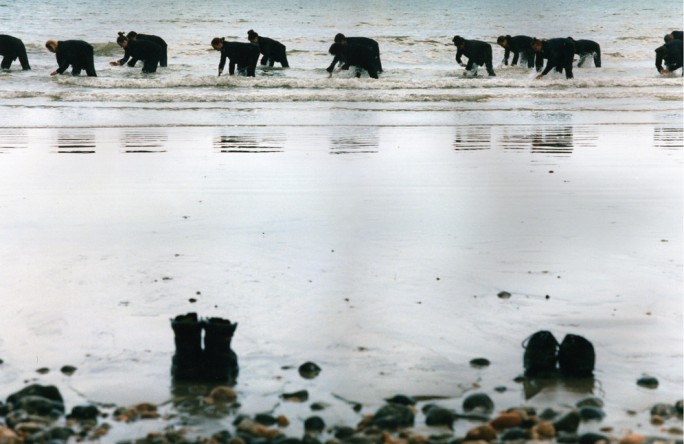
PinStripe KneeDeep
1996
Devised and directed by Charlie Morrissey and Becky Edmunds for Same Sky in Brighton.
A group of people in suits go awol on Brighton beach.
Performed once in the morning and once in the evening – both at low tide in the sea and on the beach to a live score written by Nick Pynn.
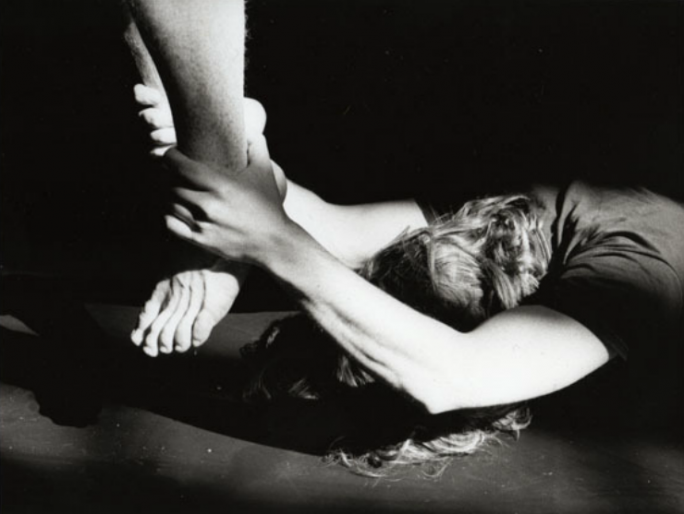
Real Life Moment
1994
Commissioned by Rhythm Method Festival and Woking Dance Umbrella
Created in collaboration with composer/pianist/cellist/performer Barnaby O’Rorke. A later version was created and performed in 1998.
© 2024 Charlie Morrissey. Built using WordPress and the Highlight Theme